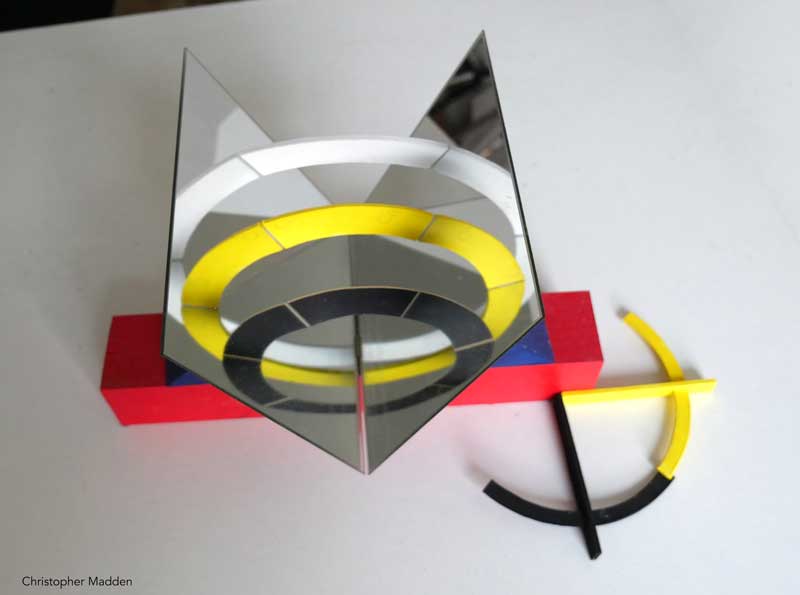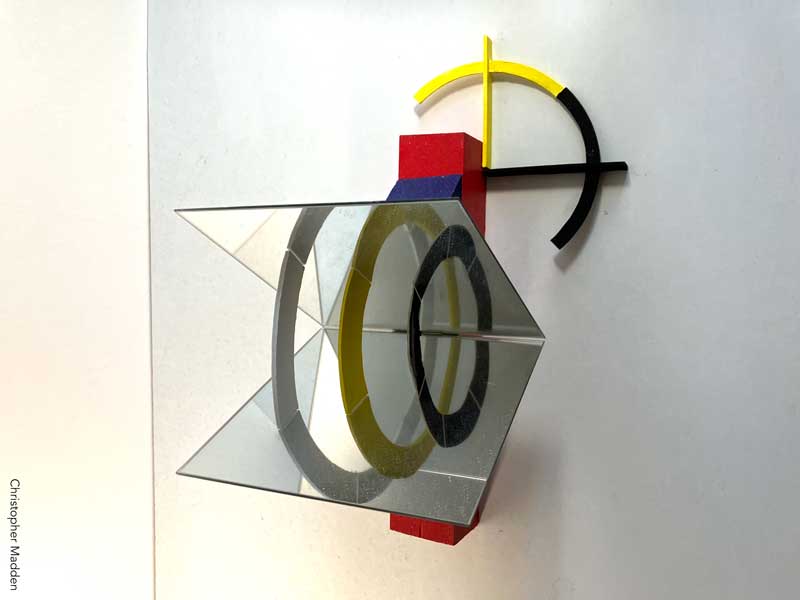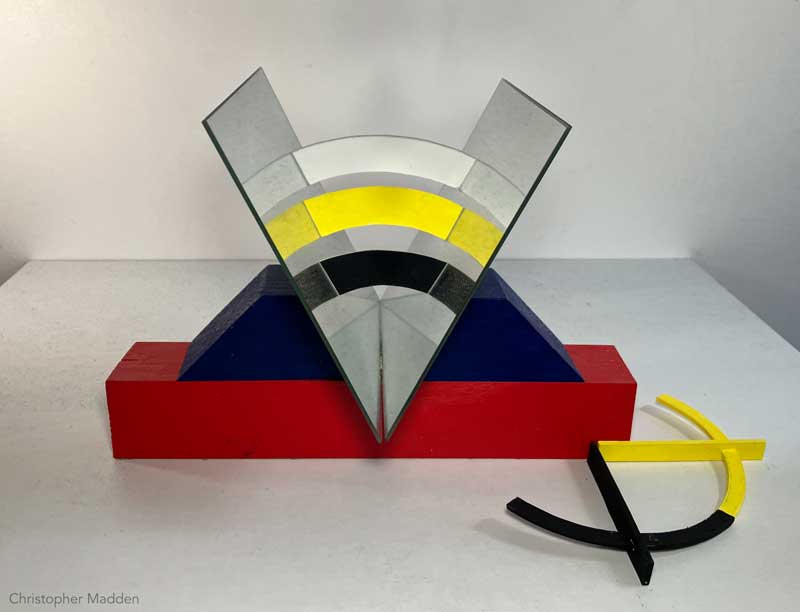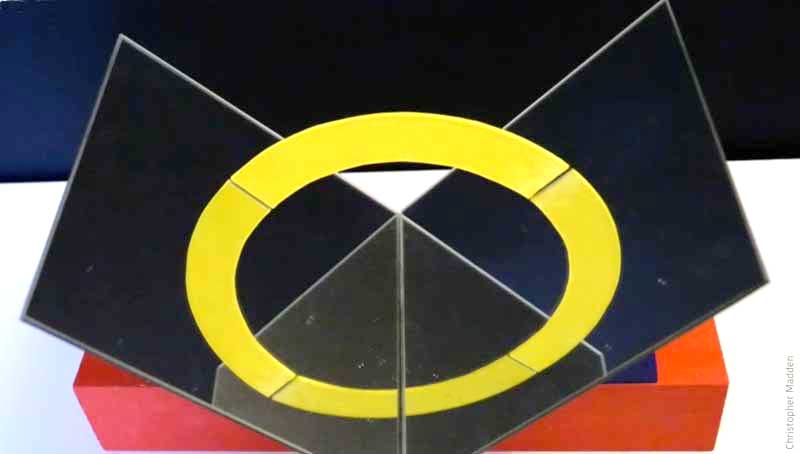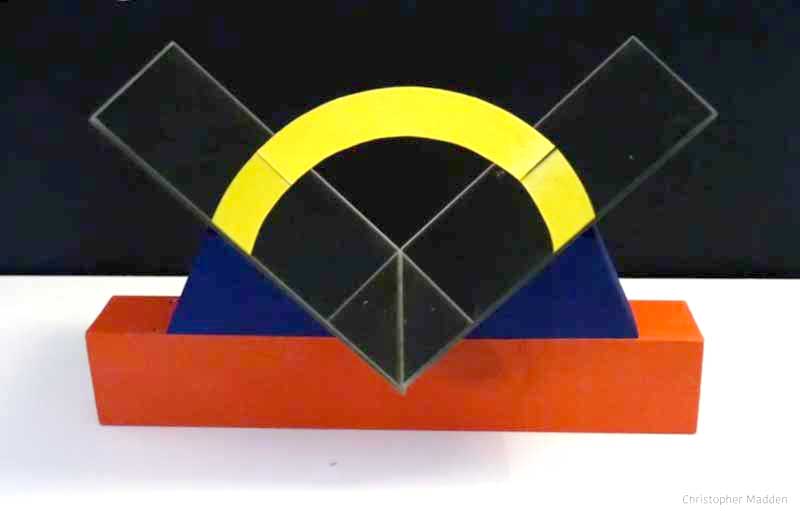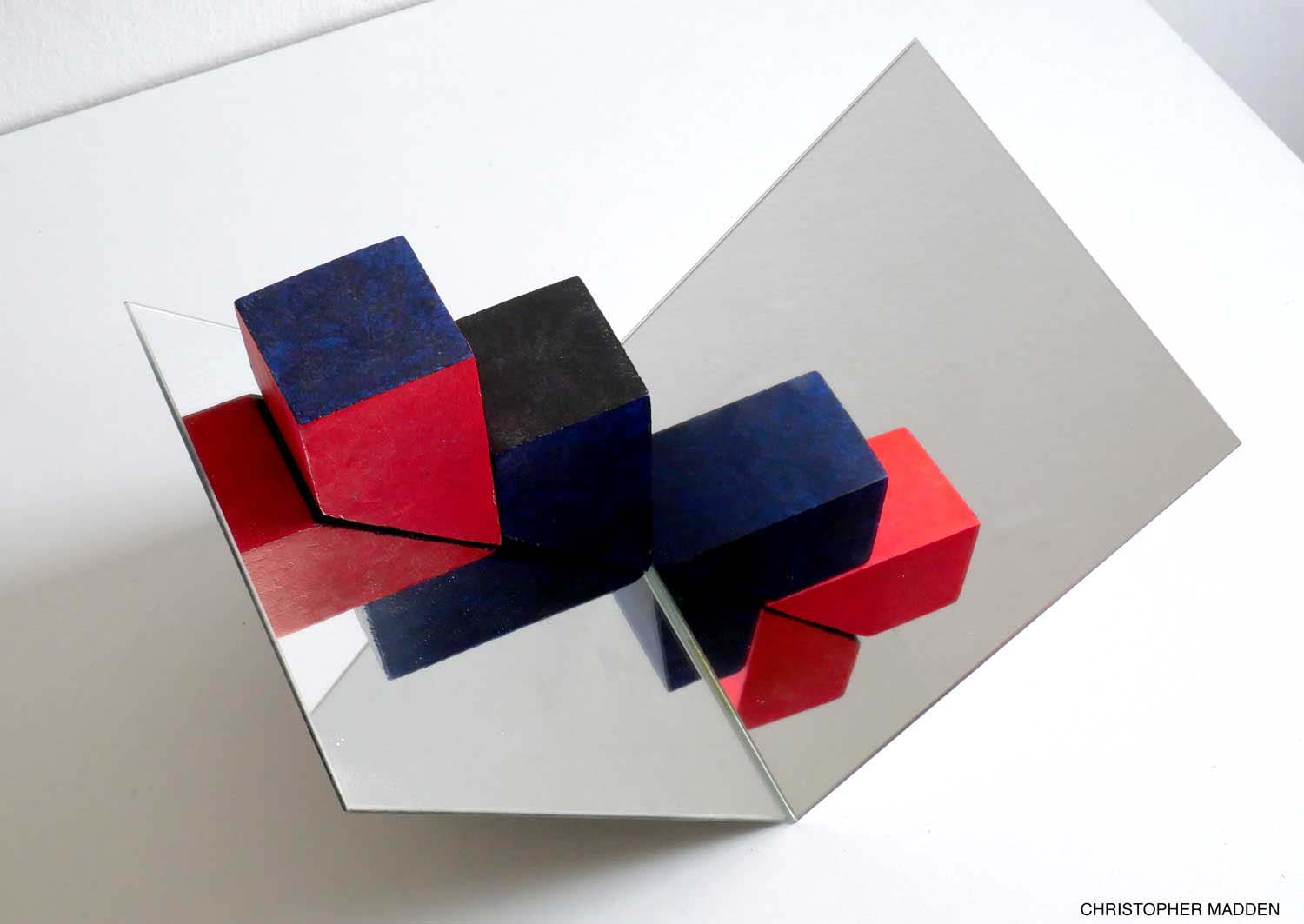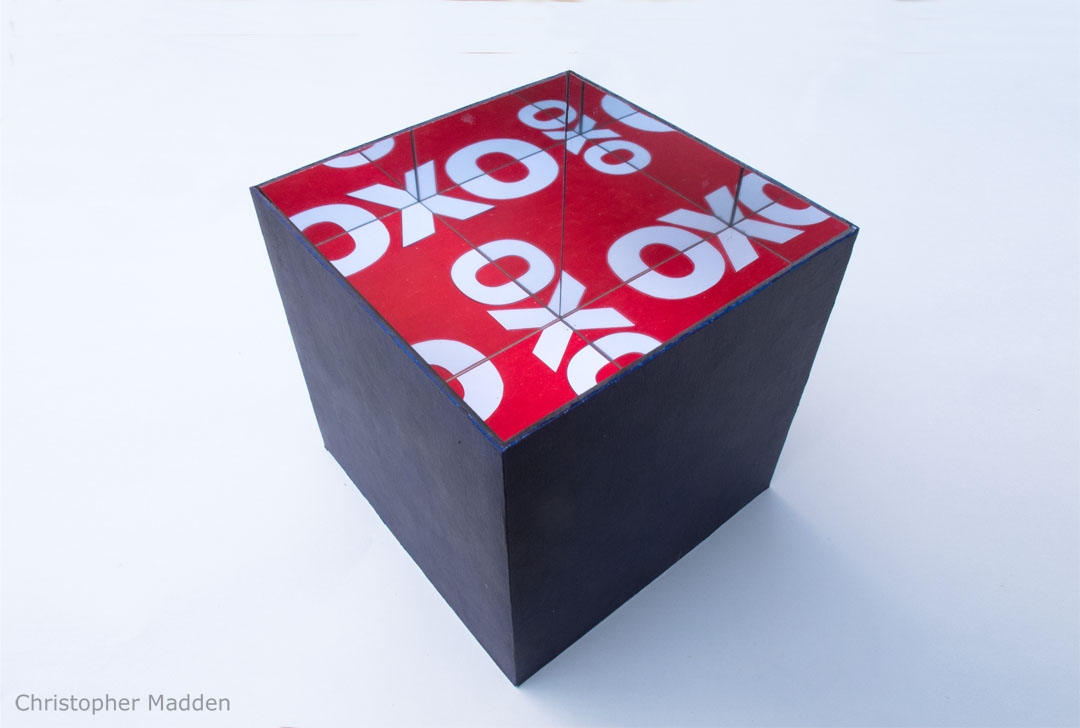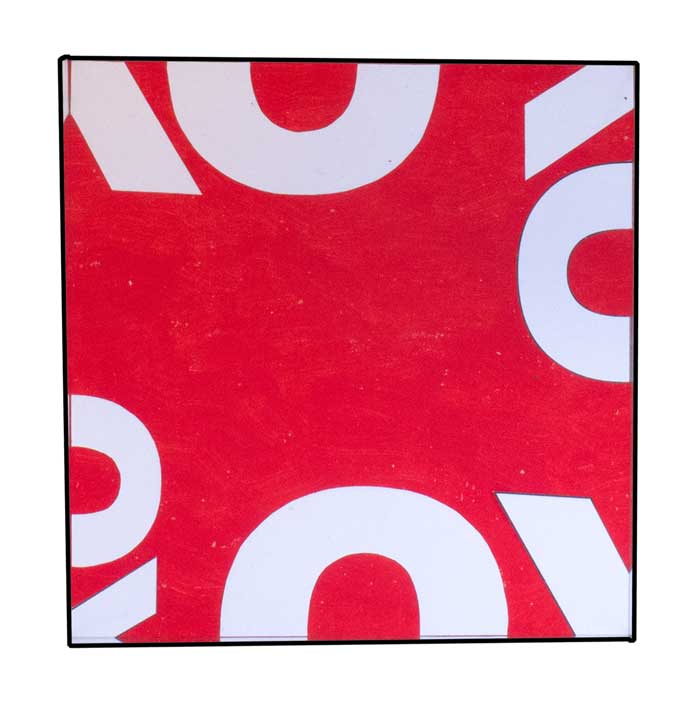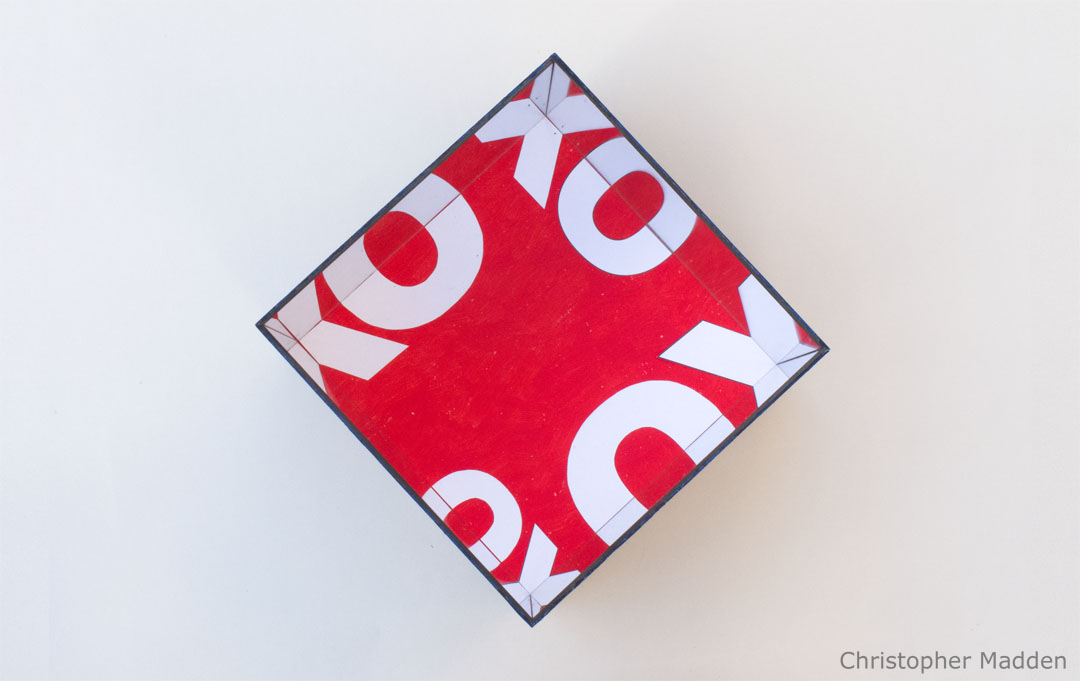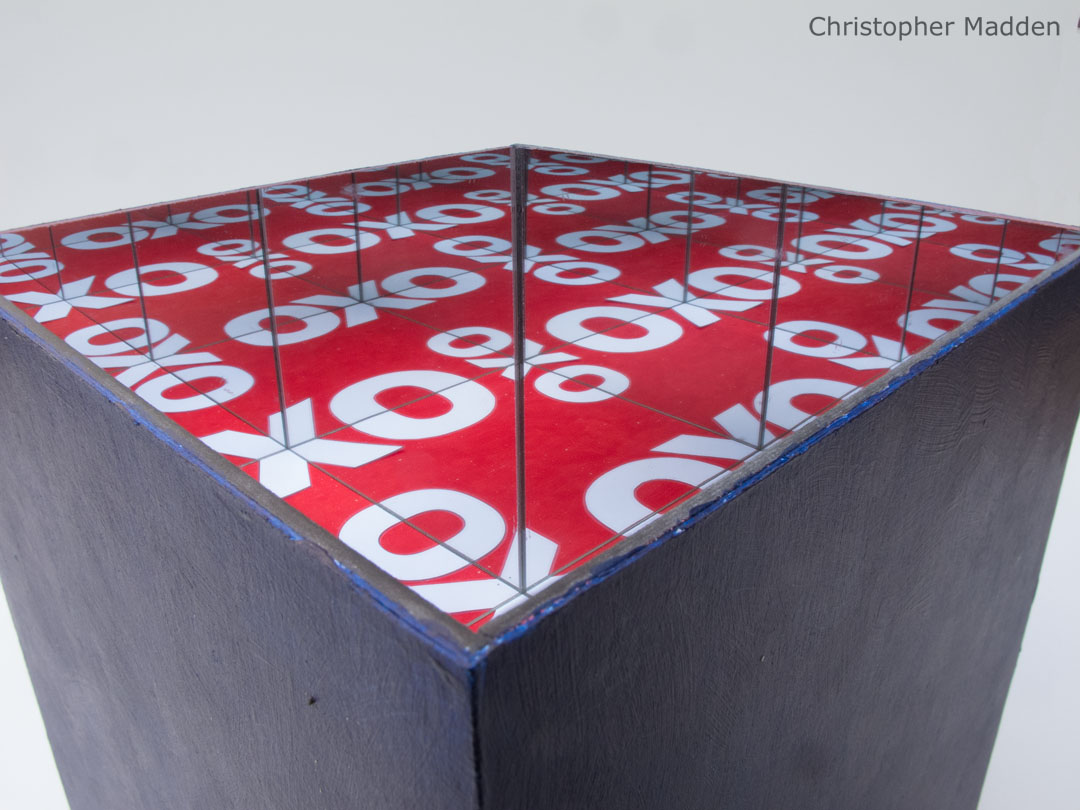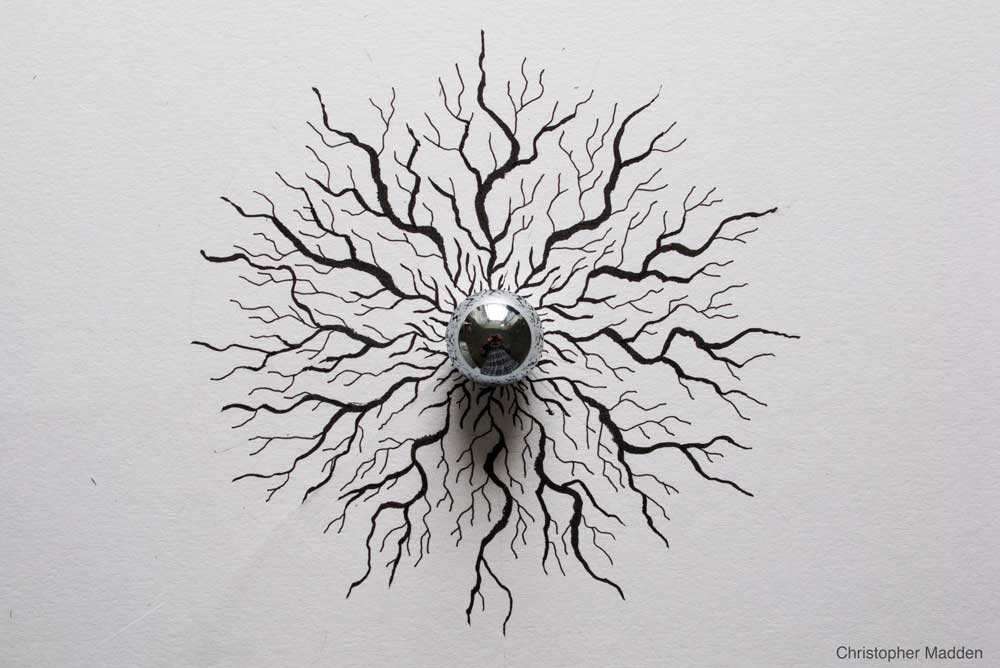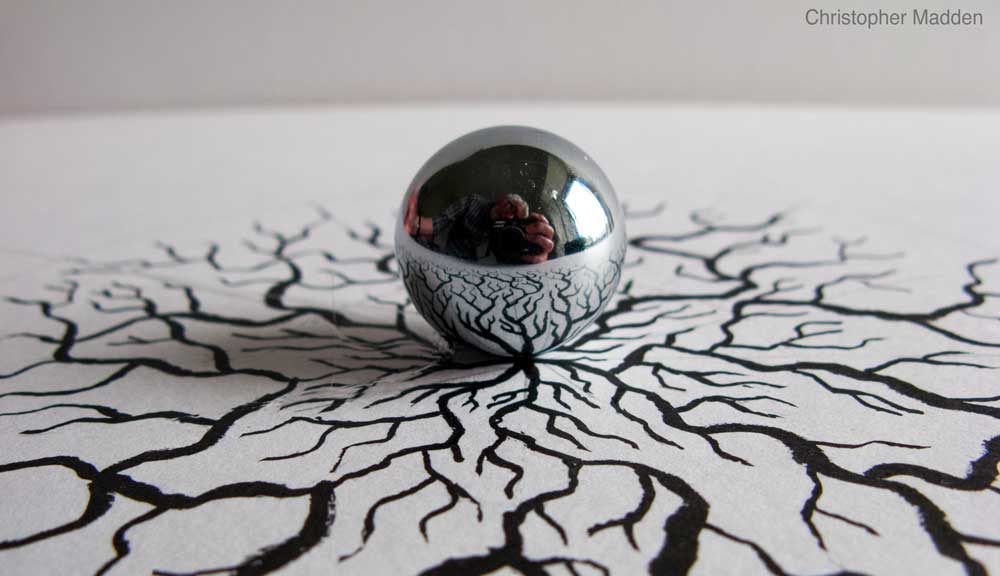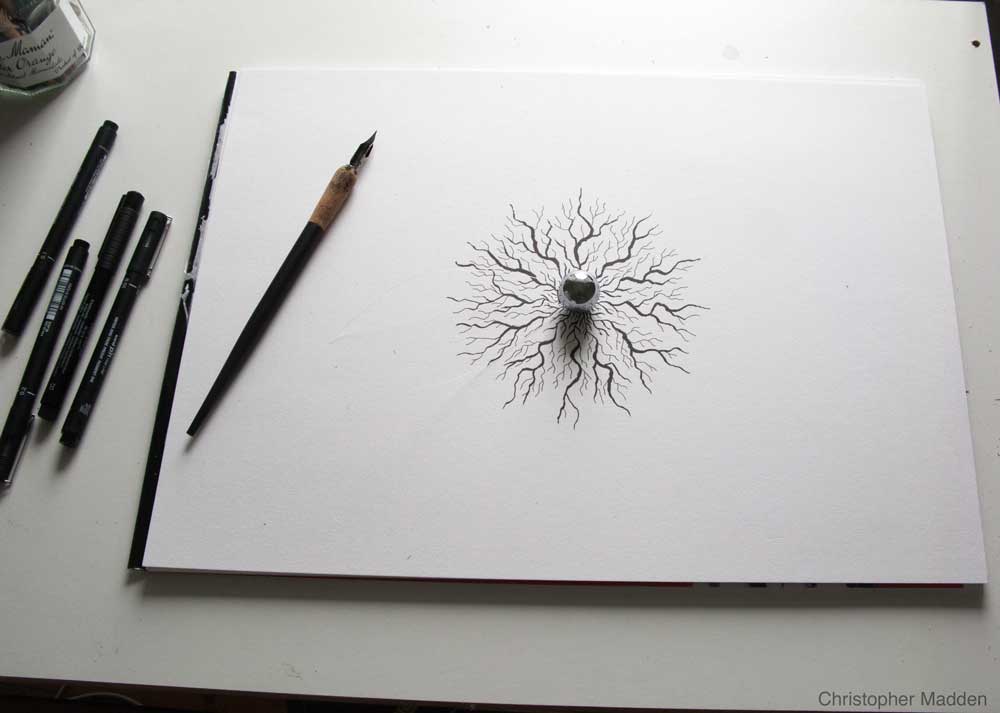Mirror art
Mirror, wood, paper, acrylic. 30 x 30 x 20cm. August 2024
A mirror-based artwork. It features a mirror mounted perpendicular to a coloured ground on which are mounted two hemispheres in different colours. The hemispheres are positioned so that the reflection of one hemisphere in the mirror precisely coincides with the position of the other hemisphere. This creates an intriguing effect when the viewer observes the work from different angles.



Mirrors are a useful device for the exploration of perception and the interpretation of what we see. I think this is partly because perfect reflections like those found in mirrors are almost nonexistent in the natural world other than when they are observed on stretches of water such as puddles, ponds and lakes in perfectly still conditions. When you look at a puddle, a pond or a lake you know exactly what you’re looking at, so your brain knows that the reflection in its surface is an optical effect, especially because the nature of the surface will usually be betrayed by the occasional ripple or the presence of a floating object such as a leaf or a duck.
Mirrors however are different. They can easily be placed in an artificial context in which the brain has to do a bit of work in deciding what it’s actually looking at. And to compound this, mirrors are almost always vertical (which the surface of a puddle or a pond never is). Put a mirror in a slightly unusual context and the brain can be deceived, which is a good avenue into the study of perception.
















